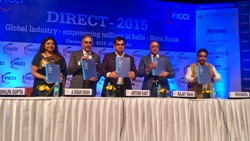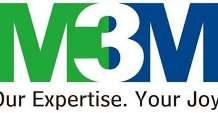The North India region was one of the largest markets for direct selling, at INR22 billion in 2013-14
New Delhi, December 09, 2015: Direct selling, one of the oldest and traditional forms of selling, is today a successful industry operating in over 100 countries, with a market size of USD180 billion. In India, the market was estimated at INR75 billion (2013-14), and forms around 0.4 per cent of the total retail sales in the country. In continuation with Direct 2014, ’Direct 2015 – Direct selling: Mapping the industry across Indian states‘ by FICCI-KPMG in India highlights the current challenges faced by the industry and the potential that the industry holds in select Indian states. Mr. Amitabh Kant, Secretary, Department of Industrial Policy and Promotion, Ministry of Commerce and Industry, released the FICCI-KPMG report.
Speaking at the inaugural session, Mr. Kant said that direct selling will have to be given a great thrust as it empowers women, MSMEs and promotes manufacturing in India, at FICCI DIRECT 2015, annual flagship event for DS industry. Mr. Kant said that the industry has a potential to grow to INR 1000 billion by 2025 much beyond the FICCI-KMPG report projection of INR 645 billion.
Acknowledging the need for clarity in definition of direct selling and a separate regulatory framework for the industry, Mr. Kant said that DIPP has already submitted the draft guidelines to Ministry of Consumer Affairs for the direct selling industry and is hopeful for its implementation by various states.
He also urged the industry to embrace technology as the industry can deliver better and even faster once technology becomes its strength.
According to the report, the industry has recorded high double digit growth of about 16 per cent over the past four to five years. The market has grown to become a key channel for distribution of goods and services in the country, especially for health and wellness products, cosmetics, consumer durables, water purifiers and vacuum cleaners.
Dr. A Didar Singh, Secretary General, FICCI said “Indian Direct Selling Industry is contributing positively towards the betterment of the society and the Nation and acknowledging this contribution, we at FICCI through our focused task force on direct selling is working dedicatedly towards the growth of this industry and seeking regulatory clarity for this industry. FICCI is working very closely with the Central and State Governments on the same and today’s conference is a step in that direction. Today, we have launched the FICCI-KPMG report on the current state and contribution of Direct Selling industry in various states, this would be reservoir of information of how this industry is contributing towards the development of various parts of India.”
“We are also very hopeful that the IMC which has been formed on Direct Selling under Ministry of Consumer Affairs would very soon come out with some regulatory framework for this industry, which would help DS to become an attractive sector for investments by both domestic and foreign companies,” Dr. Singh further added.
“While the direct selling industry in India is estimated at INR75 billion (2013-14), it is far lower than other comparable economies (one-half of direct selling market size of China and one-tenth of Malaysia). The need of the hour is to sensitise consumers and stakeholders and engage in continuous lobbying with various state government entities to propose appropriate legislation and represent the interests of the direct selling industry,” said Rajat Wahi, Partner and Head, Consumer Markets, KPMG in India.
The report attempts to analyse the region-wise direct selling market comparing and contrasting growth patterns. In the last five years, the industry has recorded strong growth rates especially in the states of Assam, Delhi, Punjab and West Bengal. As per our analysis, North India emerged as the largest region by market size and accounted for INR22 billion in 2013-14; South India which holds the second highest share of the direct selling market was pegged at INR19 billion in terms of revenue in 2013-14. While the north east is currently the smallest market, it has recorded the highest growth rate of 14 per cent in India with a revenue of INR9 billion. The growth has primarily been driven by rising income levels, high rate of urbanization and growing consumerism in the states.
The report also lists the challenges faced by the direct selling industry, one of the biggest being the lack of regulatory clarity. In our opinion, to provide a conducive and sustainable operating environment, a series of reforms are required ranging from short-term reforms like amendments in existing Acts/policies to long-term measures like implementing a specific governing legislation for the sector. A separate policy framework for the direct selling industry is required which helps identify ethical industry players, and can help regain consumers’ confidence.
The direct selling industry has significantly contributed to women empowerment, skill development, technology percolation and the growth of the SMEs sector in the states, besides contributing to the state exchequer. Total indirect tax contribution by direct selling industry to the government in FY14 alone is estimated at INR740-790 million. In addition, the industry also provides a viable means of alternative income, which promotes self-employment. Going ahead, the industry is expected to be driven by factors such as growth in consumer markets and increase in the penetration to globally comparable levels.
Corporate Comm India(CCI Newswire)





























